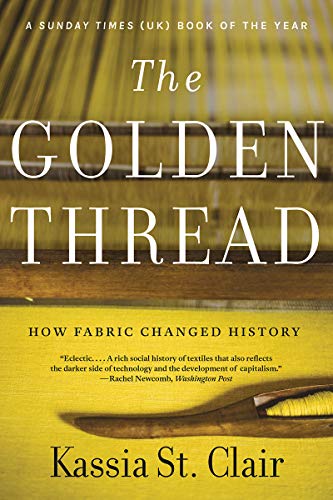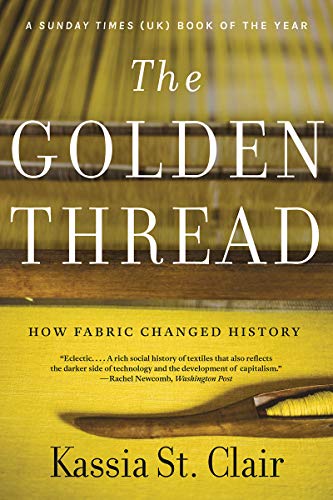The Golden Thread: How Fabric Changed History is a captivating exploration of the profound impact that fabric has had on shaping our world. This thought-provoking book delves into the rich history of textiles, revealing how they have influenced civilizations, economies, and social structures throughout time. By tracing the intricate golden thread of fabric, the author uncovers fascinating stories of innovation, trade, and cultural exchange. From the ancient Egyptians’ mastery of linen to the silk roads that connected distant lands, fabric has been the catalyst for countless discoveries and transformations. Through its pages, readers gain a deeper understanding of how fabric has shaped societies, politics, and even personal identities. The book also highlights the environmental and ethical challenges associated with the textile industry, urging readers to consider the true cost of the clothes we wear. With its engaging narrative and eye-opening insights, The Golden Thread: How Fabric Changed History is a must-read for anyone interested in the hidden power of textiles.
The Golden Thread: How Fabric Changed History
Fabric has played a significant role in shaping human civilization throughout history. From ancient civilizations to the modern world, the development of textiles has had a profound impact on the way societies function and evolve. The Golden Thread: How Fabric Changed History is a book that delves into the fascinating journey of fabric and its impact on our lives.
The Birth of Civilization: Fabric as a Catalyst
Fabric has been an integral part of human existence for thousands of years. The book explores how the discovery and mastery of fabric production allowed early humans to progress from nomadic hunter-gatherers to settled agricultural communities. The ability to create clothing and shelter from fabric transformed human lives, providing protection from the elements and enabling the exploration of new environments.
Furthermore, fabric played a significant role in the rise of trade and commerce. As societies developed specialized textile production techniques, fabrics became valuable commodities that were traded across vast distances. The Silk Road, for instance, connected civilizations and facilitated the exchange of fabrics, fostering cultural exchange and economic growth.
Revolutionizing Society: Fabric and Technological Advancements
In the industrial revolution, the textile industry took center stage. The book showcases how textile manufacturing technologies, such as the spinning jenny and power loom, revolutionized the production process, leading to a surge in textile production and availability. This, in turn, fueled the rise of the urban working class and transformed the social landscape of the time.
Fabric also played a pivotal role in women’s rights movements. The suffragettes, for example, used fabric as a symbol of their cause, creating banners and sashes that became iconic in the fight for women’s right to vote. The book explores how fabric became a powerful tool for self-expression and activism.
In conclusion, The Golden Thread: How Fabric Changed History offers a captivating exploration of how fabric has shaped the world as we know it. From its humble beginnings to its pivotal role in societal and technological advancements, fabric has left an indelible mark on human civilization.
The Golden Thread: How Fabric Shaped History
Publisher: Liveright; Reprint edition (July 13, 2021)
Language: English
Paperback: 368 pages
ISBN-10: 1631499017
ISBN-13: 978-1631499012
Item Weight: 9.6 ounces
Dimensions: 5.5 x 0.9 x 8.3 inches



